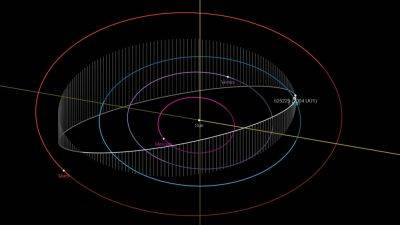There have been several close calls with asteroids in history. But did you know that not all asteroids have the same composition? According to NASA, the three primary classifications of asteroids are C-type, S-type, and M-type. C-type asteroids, which are composed primarily of carbon-rich substances, are the most frequent. S-type asteroids, which are made up mainly of silicate minerals, are less common. M-type asteroids, which are primarily composed of metal, are the least prevalent. One rare asteroid has recently piqued the interest of scientists as it is reportedly made of gold, silver and nickel deposits!
Asteroid hurtling towards Earth today at a mind-numbing 31394 kmph, reveals NASA
11.10.2023 - 05:11 / tech.hindustantimes.com / Karl Reinmuth
On September 8, 2016, NASA launched a historic mission - the Origins, Spectral Interpretation, Resource Identification, and Security-Regolith Explorer (OSIRIS-REx). It was launched to study a Potentially Hazardous Asteroid (PHA) called Bennu, which has a 1/2700 chance of impacting Earth between 2175 and 2195. After a 6-year journey that involved landing on the asteroid and collecting samples from its surface, the spacecraft finally returned the samples last month, after which they underwent a “nitrogen purge”. Today, NASA will finally open up the canister returned by the OSIRIS-REx spacecraft and show off the asteroid sample to the world in an event that will be live-streamed. You can watch it online here.
In a separate development, NASA has also discovered a Near-Earth Asteroid whose orbit will bring it close to Earth today.
NASA has warned that an asteroid, given the designation of Asteroid 2023 TF4, is on its way towards Earth and will make its closest approach to the planet today, October 11. Whilst this space rock will come very close to the planet, it is not expected to impact the surface. This asteroid is travelling at a staggering speed of 31394 kilometers per hour and will pass Earth at a distance of 2.2 million kilometers.
Astonishingly, Asteroid 2023 TF4 is just one of the five asteroids that will pass by Earth closely today!
According to NASA, Asteroid 2023 TF4 is almost the size of a house with a width of 49 feet! Due to its relatively small size, this asteroid has not been classified as a Potentially Hazardous Object. Only celestial bodies with a size greater than 492 feet and which pass Earth closer than 7.5 million kilometers are termed so.
It belongs to the Apollo group of asteroids which are a group of near-Earth asteroids named after the humongous 1862 Apollo asteroid, discovered by German astronomer Karl Reinmuth in the 1930s.
Interestingly, NASA has revealed that this asteroid has not come close to Earth in its history, and this will be its first-ever close approach. After today, it is not expected to pass Earth anytime soon, according to NASA's Jet Propulsion Laboratory.
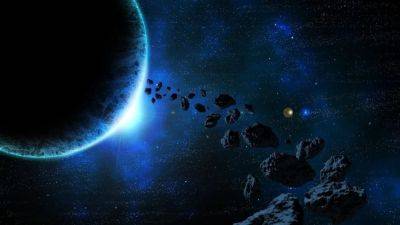
620-foot asteroid to pass close to Earth tomorrow! NASA reveals distance, speed, and more.
NASA keeps a regular check on the Asteroids passing close to the Earth. Asteroids have posed a potential threat to Earth for millions of years now. That is why it is extremely important that we prepare for all eventualities. Stopping an asteroid is impossible at the last moment, but we can take preventative measures and that is why space agencies like NASA keep a watch on all asteroids approaching Earth. In a journey to track asteroids, NASA has successfully executed the DART mission where it was able to divert an asteroid from its path. Now, NASA has tracked a gigantic asteroid traveling close to Earth. Check out the details below:
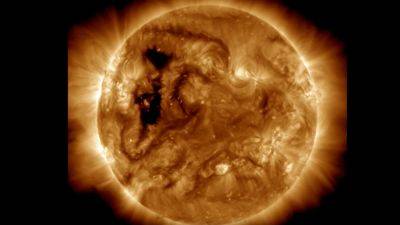
Solar storm strike possible soon, as solar wind stream rushes towards Earth; NASA reveals its origin
Just a couple of days ago, a sneaky solar storm struck the Earth, sparking auroras in the Arctic Circle. The reason for the storm was not known since no coronal mass ejection (CME) was expected to hit the planet. It turned out that a crack opened up in the magnetosphere, allowing solar radiation to easily pass through. Now, another similar incident is on the cards, only at a much higher intensity. A massive hole has opened up on the Sun this time which is releasing a stream of solar winds. It is expected to reach the Earth on October 30, when it can trigger a solar storm, as per the forecast. The NASA Solar Dynamic Observatory images show the hole through which solar winds are escaping.
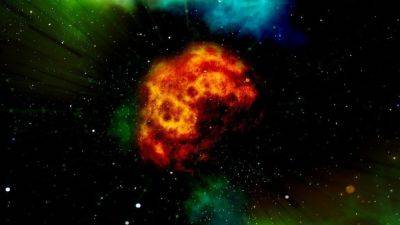
Chelyabinsk asteroid-sized space rock to pass Earth at very close quarters today
According to NASA, an asteroid, given the designation of Asteroid 2023 UV6, is on its way towards Earth and will pass the planet at a close distance today, October 27. The asteroid was discovered by NASA's Defense Coordination Office (PDCO), which is responsible for monitoring the skies and keeping a watch on various Near-Earth Objects (NEOs). Asteroid 2023 UV6 is expected to pass the planet at a distance of 3.9 million kilometers while travelling at a speed of 26329 kilometers per hour, as per the space agency. Here's all about Asteroid 2023 UV6.

1200-foot asteroid to pass Earth today, says NASA; it is as big as the Empire State Building
NASA tracks asteroids using a combination of ground-based and space-based telescopes. The NASA-funded Asteroid Terrestrial-impact Last Alert System (ATLAS), scans the night sky for moving objects and reports any potential asteroid detections, while some space-based observatories use infrared sensors to detect asteroids and their characteristics. Some of these include the Wide-field Infrared Survey Explorer (WISE) and the NEOWISE mission. Using these advanced instruments, the space agency has revealed information about a 1200-foot Potentially Hazardous Asteroid that is set to pass Earth today. Know all about it.
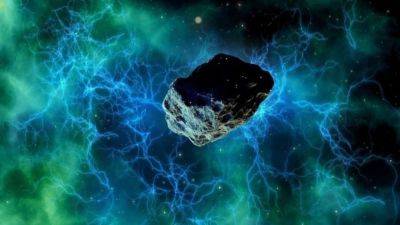
120-foot Asteroid 2023 UR1 to pass close to Earth today; know what NASA revealed
Do you know how many asteroids NASA scientists have tracked to date? Approximately 1,298,148 asteroids have been identified by NASA. The space agency employs a range of advanced ground and space-based telescopes for tracking and researching these cosmic rocks, primarily concentrated within the asteroid belt situated between the orbits of Mars and Jupiter. Telescopes and observatories such as NEOWISE, the Atacama Large Millimeter/submillimeter Array (ALMA), Pan-STARRS1, and the Catalina Sky Survey play pivotal roles in the study of asteroids and the mitigation of uncertainties surrounding their close encounters with Earth.
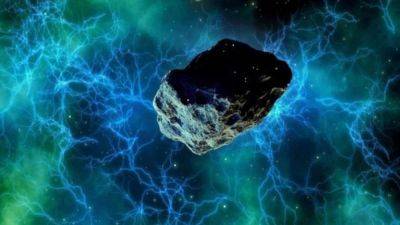
Apollo asteroid to pass Earth today, reveals NASA
For years, it has been known that the most likely cause of the extinction of dinosaurs was an asteroid impact. The most common theory behind the extinction is the Alvarez hypothesis, which claims that an asteroid struck Earth nearly 65 million years ago and wiped out entire species of dinosaurs. This theory is backed by some proof too as scientists have also discovered its impact crater, known as the Chicxulub crater, buried under the Yucatan Peninsula in Mexico. As per the hypothesis, the impact of the asteroid would have caused the formation of huge tidal waves and an impact crater almost 140 km wide. Lland material would have splattered into space, changing the Earth into a nuclear winter-like environment, ultimately leading to the demise of dinosaurs.
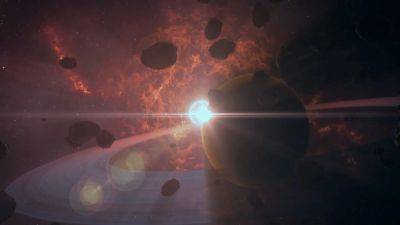
Apollo group asteroid to come closer than the Moon; Know details of approach
NASA has recently issued details about an asteroid designated as Asteroid 2023 TK15 that is expected to make its closest approach to Earth on October 20. This asteroid has been discovered and tracked using various advanced technological instruments such as the NEOWISE telescope, Atacama Large Millimeter/submillimeter Array (ALMA), Pans-STARRS1 and Catalina Sky Survey. Know all about it.
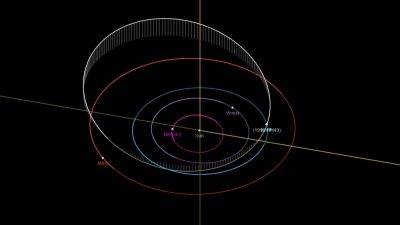
Potentially Hazardous Asteroid to pass Earth today! Know details
You may think asteroids are simply floating rocks in space and while it may seem so due to their appearance, it isn't quite the case. These space rocks can be classified into 3 types based on their structural composition. The most commonly found asteroids are S-type, which are made up of carbon-rich substances. On the other hand, S-type asteroids are made up mainly of silicate minerals and are less common. M-type asteroids are the least prevalent and they are primarily composed of metal. NASA recently sent out a mission to a metal-rich asteroid called 16 Psyche which is supposedly worth more than the whole planet's economy put together, at a staggering $10 quintillion!
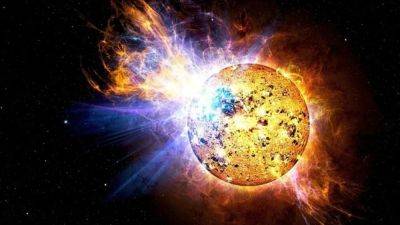
Sunspot could hurl out M-class solar flares, reveals NASA
Like asteroids, solar flares also pose a threat to Earth. Strong solar flares can cause power and radio blackouts for several hours or even days, spark auroras, give people in airplanes a dose of radiation and can even influence elections! Technological instruments are especially at a risk during flares. This is because when cosmic rays strike Earth, they release various particles like energetic neutrons, muons, pions and alpha particles. Although these particles do not affect the human body, they can pass-through integrated circuits and cause damage, often changing the data stored in the memory. With the solar maximum approaching in the next few years, the Sun's activity is expected to rise, and it could result in more solar flares.

Asteroid 2023 TT8 to get very close to Earth today, NASA reveals
Asteroids are abundant in space and as many as 1298148 have been discovered to date. To track and study these space rocks which are mainly present in the asteroid belt between the orbits of Mars and Jupiter, NASA has several advanced ground and space-based telescopes in place. NEOWISE telescope, Atacama Large Millimeter/submillimeter Array (ALMA), Pans-STARRS1 and Catalina Sky Survey are just some of the telescopes and observatories that help study asteroids and remove any uncertainties around their potentially close approaches to Earth.

48-foot asteroid to get very close to Earth today, NASA says
NASA maintains a vigilant eye on the cosmos to track, monitor, and study each and every asteroid in space that comes near Earth. This crucial endeavor involves a combination of space telescopes and ground-based observatories, including the renowned Hubble Space Telescope. As of now, there are 1,298,210 known asteroids that have been checked. While there are no immediate threats from asteroids to Earth, but they can still wreak havoc in the future. Therefore, tracking them is the only solution to avoid any calamities. Recently, NASA has revealed an asteroid, set to pass by Earth. It is designated as the asteroid 2023 TC7. Read on to know more about this asteroid approaching close to the Earth:
